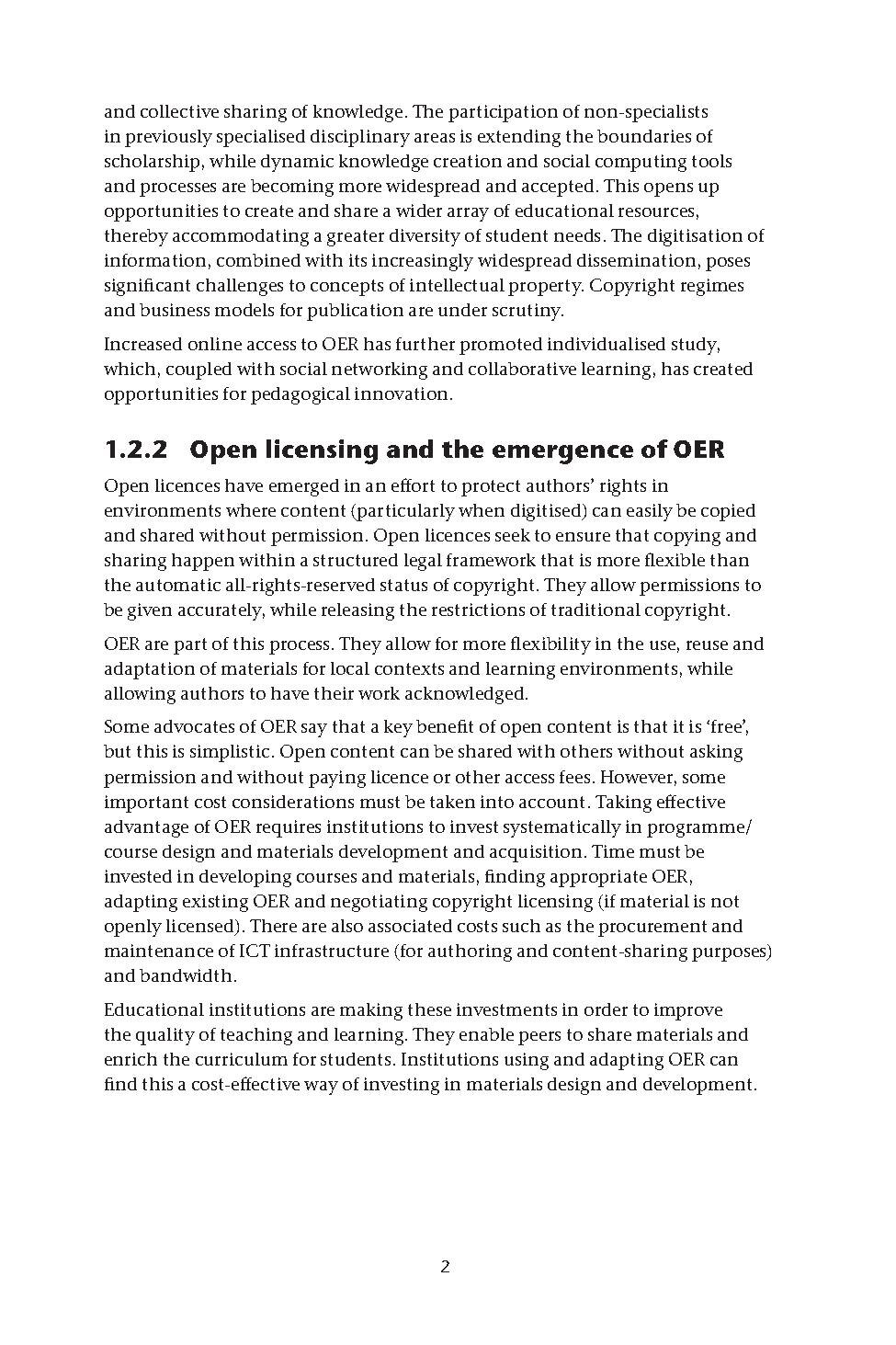and collective sharing of knowledge. The participation of non-specialists in previously specialised disciplinary areas is extending the boundaries of scholarship, while dynamic knowledge creation and social computing tools and processes are becoming more widespread and accepted. This opens up opportunities to create and share a wider array of educational resources, thereby accommodating a greater diversity of student needs. The digitisation of information, combined with its increasingly widespread dissemination, poses significant challenges to concepts of intellectual property. Copyright regimes and business models for publication are under scrutiny.
Increased online access to OER has further promoted individualised study, which, coupled with social networking and collaborative learning, has created opportunities for pedagogical innovation.
1.2.2 Open licensing and the emergence of OER
Open licences have emerged in an effort to protect authors’ rights in environments where content (particularly when digitised) can easily be copied and shared without permission. Open licences seek to ensure that copying and sharing happen within a structured legal framework that is more flexible than the automatic all-rights-reserved status of copyright. They allow permissions to be given accurately, while releasing the restrictions of traditional copyright.
OER are part of this process. They allow for more flexibility in the use, reuse and adaptation of materials for local contexts and learning environments, while allowing authors to have their work acknowledged.
Some advocates of OER say that a key benefit of open content is that it is ‘free’, but this is simplistic. Open content can be shared with others without askingpermission and without paying licence or other access fees. However, some important cost considerations must be taken into account. Taking effective advantage of OER requires institutions to invest systematically in programme/course design and materials development and acquisition. Time must be invested in developing courses and materials, finding appropriate OER, adapting existing OER and negotiating copyright licensing (if material is not openly licensed). There are also associated costs such as the procurement and maintenance of ICT infrastructure (for authoring and content-sharing purposes) and bandwidth.
Educational institutions are making these investments in order to improve the quality of teaching and learning. They enable peers to share materials and enrich the curriculum for students. Institutions using and adapting OER can find this a cost-effective way of investing in materials design and development.
2
